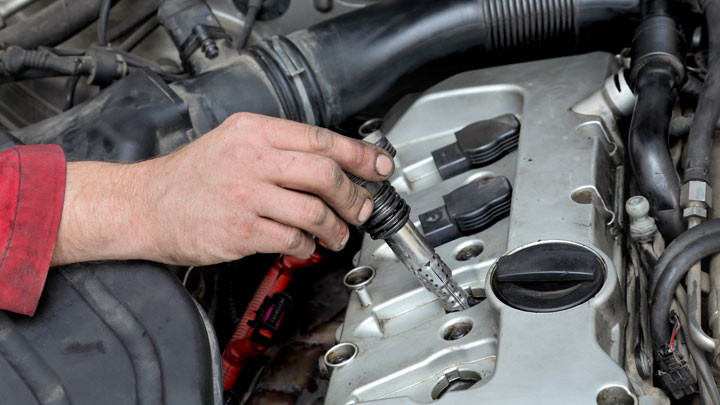Ignition Coils: 5 Signs of faulty coils.
Ignition coils is an induction coil in an automobile’s ignition system that transforms the battery’s low voltage to the thousands of volts needed to create an electric spark in the spark plugs to ignite the fuel.
The purpose of the ignition system is to generate a very high volt age from the car’s 12 volt battery, and to send this to each sparkplug in turn, igniting the fuel-air mixture in the engine’s combustion chambers.
The coil is the component that produces this high voltage.
Some common symptoms of bad ignition coil in a car:
1. Backfiring:
The backfiring caused by your vehicle can indicate the symptoms of the ignition coil failure in its early stages.
The backfiring occurs when the unused fuel in the combustion cylinders of the engine leave through the exhaust pipe.
If this problem is left unaddressed, then it can result in the costly repairs which can unnecessary if not properly maintained.
The backfiring problem can be detected by the emission of a black smoke through the exhaust pipe. The smell of gasoline in that smoke may also give away the ignition coil failure.
2. Fuel Economy:
Another symptom for a faulty ignition coil is the affected fuel economy. If your vehicle is getting less mileage than it was before, then it could mean that the ignition coil failure has occurred.
3. Vehicle Stalling:
The ignition coil failure will also result in the stalling of that vehicle.
This will occur because of the irregular sparks sent to the spark plugs by the faulty ignition coil. The vehicle may shut off completely when brought to stop leaving you with the trouble to restart it.
4. Engine Misfiring:
Engine misfiring will be seen in a vehicle whose ignition coils have failed.
Trying to start the engine of such a vehicle will result in engine misfiring like coughing spluttering noise regularly.
When driving at high speeds, jerking and spitting will be seen in the behaviour of that vehicle.
A vehicle with a failed ignition coil will also result its vibration when it is idling at a stop sign.
5. Engine Jerking, Rough idling, Poor Power:
Another symptom is engine rough idling, jerking and hesitate even at accelerate, and you will feel poor power when you drive the car.
Testing Advice
When testing ignition coils, start with the basics:
1. Carry out external checks for signs of HT leaks (tracking), check for cracks to the insulating material, check for corrosion to the terminals.
2. Next move onto testing the internal resistances, check primary and secondary windings, check for the resistance (if any) between the two circuits. Compare the readings to the relevant data manuals.
The above tests will highlight many faults, however, full testing is very difficult as the most common failures occur with internal insulation failure. Cracks develop in the resin that insulates the primary from the secondary windings. This causes HT voltage to leak down through to the primary coils. Without specialist equipment it is impossible to test for this. Checking the resistance between the coils with a conventional Ohm meter will simply show an open circuit, it’s only when there is 30,000 volts trying to get out that the faults show. In summary, testing the resistance of the primary and secondary windings will not guarantee an ignition coil’s serviceability.
Caution: As the coil is now controlled by the ECU any deterioration of the coils internal insulation could result in ECU failure.
Contact us today for inspections on those ignition coils: BOOK ONLINE
Locate a VAGSPEC branch:









